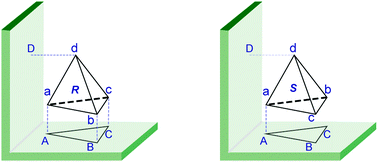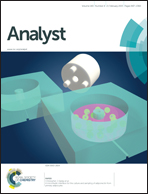Stereospecific recognition and quantitative structure–activity relationship between antibodies and enantiomers: ofloxacin as a model hapten†
Abstract
In this study, ofloxacin stereoisomers were chosen as a simple model to investigate the stereospecific recognition of chiral haptens and antibodies. Three polyclonal antibodies were studied and showed a relatively high enantioselectivity and an excellent sensitivity. Comparative molecular field analysis and comparative molecular similarity indices analysis were employed to investigate the chiral recognition between the antibody and the ofloxacin enantiomer, and all the models yielded high correlation and predictive ability. It was found that the chiral discrimination was probably caused by steric hindrance; the antibody stereospecificity could be ascribed to the variation of the R1 and R3 groups of quinolones; the common structure of the quinolones is also essential in the hapten–antibody recognition. The recognition between the chiral haptens and the antibodies was co-affected by multiple interaction forces, and those forces were defined explicitly at the sub-structural level. An illustrative enhanced model with good simplicity and universality was also developed for a better understanding of the stereospecific recognition of ofloxacin enantiomers and antibodies for the first time. This work provides insights into the stereospecific recognition of chiral haptens and antibodies.


 Please wait while we load your content...
Please wait while we load your content...